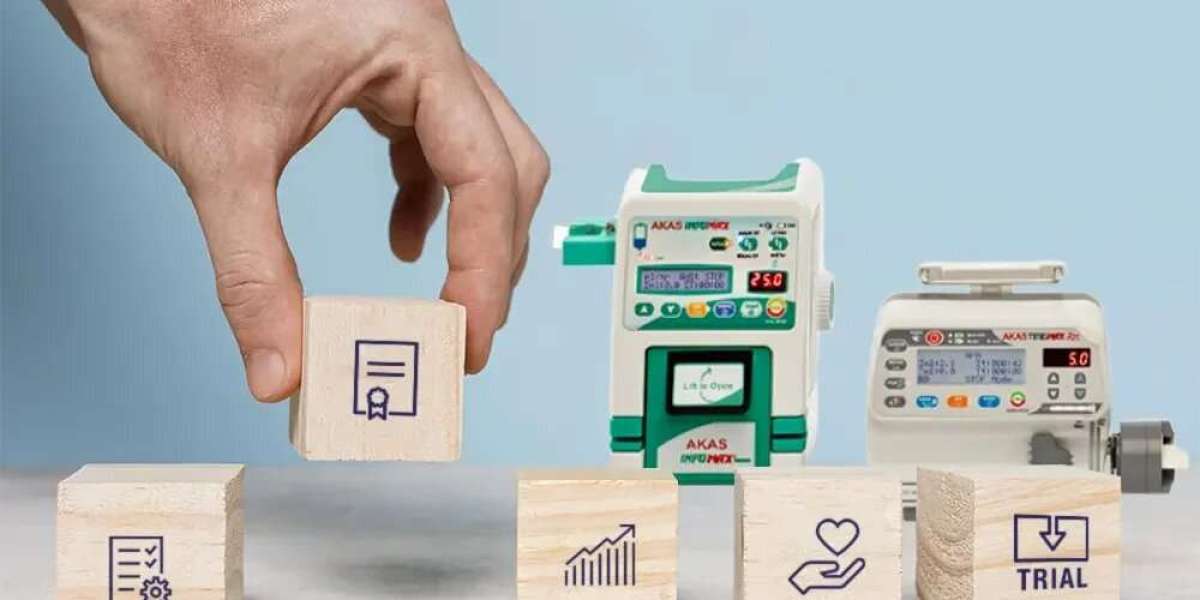Introduction
Modern hospital care depends on precise coordination between technology, clinical teams, and patient needs.
Infusion Pump integration within hospital networks plays a pivotal role in achieving this harmony, where every drop of medication must be delivered accurately and on time.
In a setting where time-sensitive treatments are critical, the ability to seamlessly integrate Infusion Pumps with digital health infrastructure has become a clinical necessity.
The Importance of Device Connectivity in Healthcare
Healthcare professionals rely on accurate, uninterrupted data to make swift, informed decisions.
Disconnected systems can lead to communication gaps, workflow inefficiencies, and potential clinical errors, especially during infusion therapy.
By integrating Infusion Pumps with hospital networks, these challenges are addressed through real-time data sharing, smart alerts, and streamlined documentation.
Why Infusion Pump Integration Matters
- Improves Patient Safety
- Ensures Consistent Drug Delivery
- Reduces Manual Entry Errors
- Streamlines Nursing Workflow
- Enables Real-Time Monitoring and Alerts
Infusion Pumps are central to medication administration across multiple departments.
When connected to Electronic Health Records (EHRs), these pumps enable clinicians to access dosage history, verify treatment schedules, and track infusion progress instantly.
Such integration reduces the risk of overdose, under-infusion, or duplication, especially in high-dependency wards.
How Integration Enhances Hospital Operations
Infusion Pump integration is not just a tech upgrade—it is a strategic advancement in hospital care.
Systems that allow infusion devices to interface with central monitoring platforms and EHRs help improve patient outcomes and regulatory compliance.
With hospitals moving towards smart infrastructure, device connectivity must be designed to support future-ready operations.
Benefits of Integrated Infusion Pump Systems
- Automatic Documentation
Syncs infusion data with EHRs, reducing administrative burden on nursing staff. - Dose Error Reduction
Enables automatic drug library checks and dose limit safeguards during setup. - Real-Time Alerts
Sends critical alerts to central monitoring systems to flag pump issues immediately. - Improved Workflow Efficiency
Frees up nursing time by reducing double documentation and manual tracking. - Centralised Monitoring
Allows staff to oversee multiple infusion pumps across departments in real-time. - Data Analytics
Offers historical data insights to optimise clinical practices and reduce medication waste.
Key Considerations for Hospitals
Integration success depends on more than just technology; it requires the right approach to planning, training, and vendor selection.
Hospitals must evaluate the compatibility of their existing systems with new Infusion Pump models and ensure seamless interoperability.
Here are some critical factors to consider:
- Compatibility with EHR platforms
- Wireless connectivity and data security standards
- Pump software upgradability and support
- Training modules for clinical staff
- Compliance with global safety regulations
A structured integration plan minimises downtime, promotes user adoption, and improves the quality of care delivered at every stage.
Creating a Safer and Smarter Hospital Environment
When infusion devices are intelligently connected, they become part of a larger ecosystem of care that prioritises safety and responsiveness.
Infusion Pump integration helps eliminate information silos, making it easier for care teams to coordinate medication schedules and share updates across departments.
It also helps in avoiding alarm fatigue by setting clinically relevant alerts directly into central nursing dashboards.
The entire hospital benefits—from the emergency room to surgical theatres—through enhanced communication, clarity, and confidence in clinical delivery.
Supporting Clinical Excellence through Technology
A fully integrated Infusion Pump system promotes continuous improvement by offering measurable performance data.
These insights can be used by quality and compliance teams to:
- Identify inconsistencies in infusion therapy
- Detect underperformance or malfunctioning pumps
- Monitor compliance with safety protocols
- Reduce adverse drug events over time
Integration creates a feedback loop that helps administrators and clinical staff refine processes, set safer drug delivery standards, and improve patient satisfaction.
Conclusion
Infusion Pump integration is a vital step in creating safer, smarter, and more coordinated hospital environments.
From enhancing safety and reducing errors to improving workflows and enabling proactive care, integrated infusion systems offer multi-level benefits for healthcare institutions.
To achieve these benefits, hospitals must choose technology partners with proven expertise in medical device integration and support.
Akas Infusion stands as a trusted manufacturer of world-class drug delivery solutions like volumetric pumps, engineered for precision and long-term reliability.



